Excerpts from Jim Conrad's
Naturalist Newsletter
from the January 14, 2018 Newsletter issued from Rancho Regenesis in the woods ±4kms west of Ek Balam Ruins; elevation ~40m (~130 ft), N20.876°, W88.170°; north-central Yucatán, MÉXICO
BIG YELLOW VELVETLEAF
Here in mid January there's a feeling in the air a little like early fall in the eastern US. It's our coolest time of the year, certain trees already are losing a few leaves as the dry season progresses, and it all feels pretty good. At the weedy garden edge -- I'm letting weeds grow as "green mulch," keeping wind and sunlight from parching the soil -- a 7-ft-tall (2m) herb struck me as particularly early autumnish with its bug-eaten leaves and diffuse flowering head silhouetted against a slightly unsettled-looking, coldfront-announcing sky, as shown below:
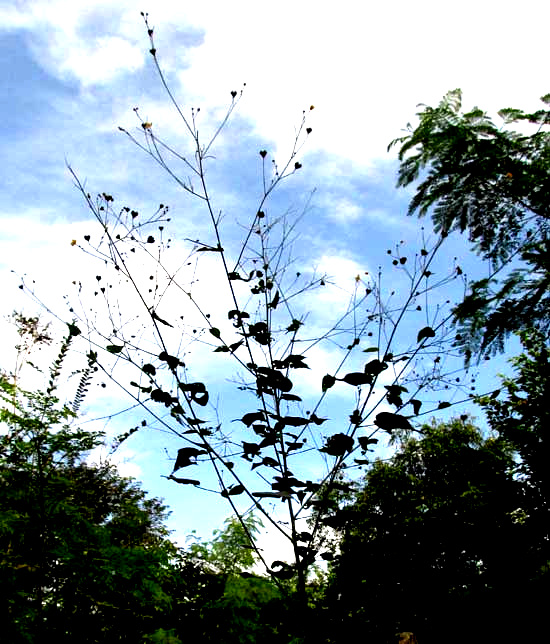
Below, a close look at the inflorescence shows both small flowers and fruits at the tips of exceptionally long stems, or pedicels:

Close up, the flowers display a familiar color and pattern, as seen below:
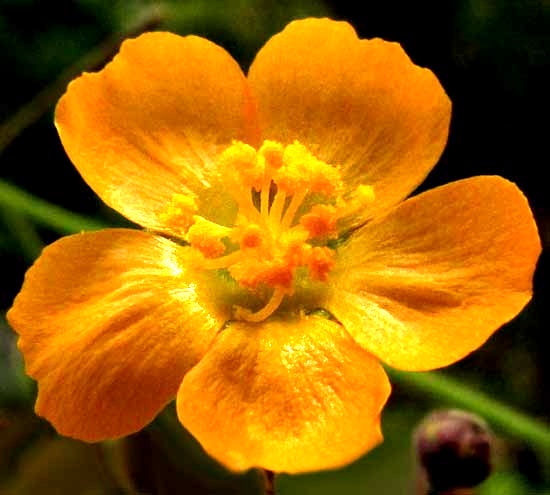
Several genera in the big Hibiscus Family, the Malvaceae, produce flowers of this same orangish-yellow hue, with numerous stamens with their filament basis attached at their bases, so already we know the family. However, the Hibiscus Family embraces so many genera and species that learning the family only advises us of the need to "do the botany " -- to gather all the field marks we can so that later we can figure out the plant's name. Turning the blossom over, a neat little calyx with five reddish-brown tipped sepals was seen, shown below:
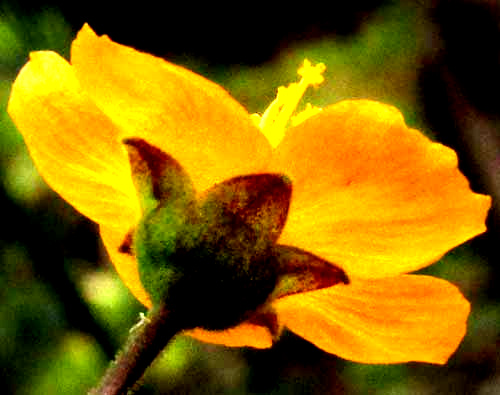
In that picture an important field mark that easily is overlooked if someone doesn't bring it to your attention is that toward the calyx cup's base there's a slight constriction encircling the calyx. This constriction becomes more obvious in the fruiting stage and helps considerably with the ID.
Sometimes in this family leaf venation and form help with IDs more than the flowers. A leaf base with two noteworthy, broad, rounded, backward-projecting, bug-eaten lobes is shown below:
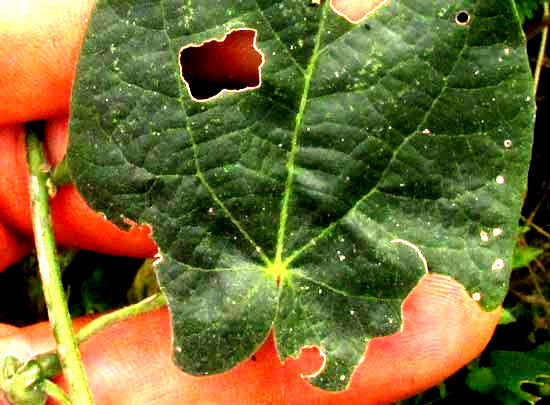
In the Hibiscus Family, fruits often show more variation than either flowers or leaves. This species' fruits show important characteristics, especially the 3-5 pointy-topped capsules called schizocarps, which as they mature develop distinctive purplish-black tops, as shown below:
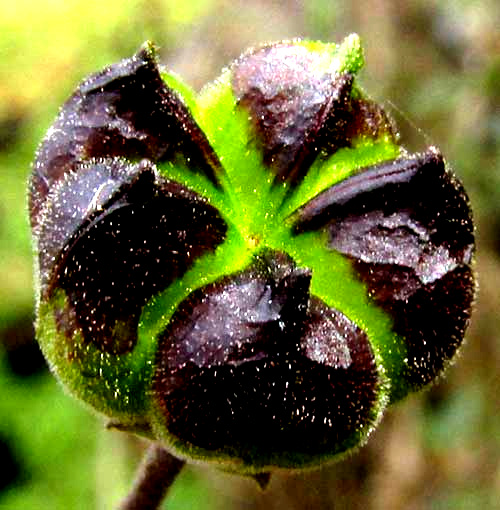
Each matured schizocarp splits down the middle to release a single hairy seed, as shown below:
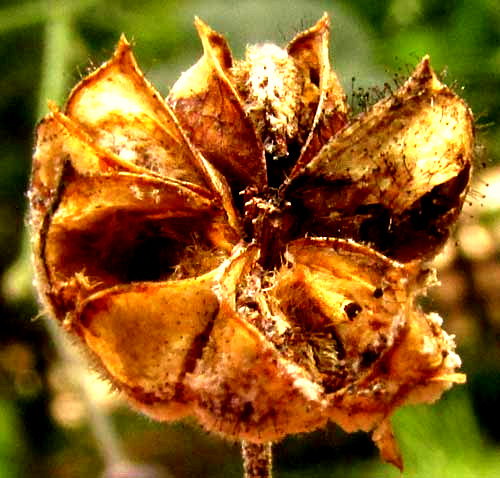
The above details suffice to reveal that here we're dealing with what in English has been named the Big Yellow Velvetleaf, even though the name velvetleaf normally is reserved for species in the Hibiscus Family genus Abutilon. This is WISSADULA AMPLISSIMA, a species so widely and commonly distributed throughout the Earth's tropics and subtropics that it's considered "pantropical." In the Americas it's found from Texas south to deep into South America. Darwin collected the plant during his voyage on the Beagle among the Cape Verde Islands.
Belonging to the Hibiscus Family, one expected feature found here is that the plant's stems contain very strong fibers. If you need a string, just pull sideways on a stem branch and your string will tear from the main stem.